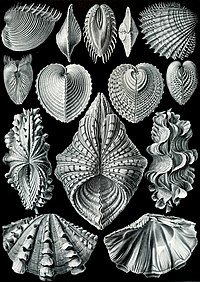
Photo from wikipedia
Foodborne viruses such as norovirus and hepatitis A virus cause frequent outbreaks associated with the consumption of raw or undercooked oysters. Viral particles are bioaccumulated in the oyster’s digestive glands,… Click to show full abstract
Foodborne viruses such as norovirus and hepatitis A virus cause frequent outbreaks associated with the consumption of raw or undercooked oysters. Viral particles are bioaccumulated in the oyster’s digestive glands, making RNA extraction and RT-PCR detection difficult due to the complex nature of the food matrix and the presence of RT-PCR inhibitors. Herein, we have developed a viral RNA extraction protocol from raw oysters using murine norovirus (MNV) as a surrogate for human noroviruses. The method combines lysis in Tri-Reagent reagent, followed by RNA extraction using Direct-Zol purification columns and lithium chloride precipitation. Viral load quantification was performed by both qRT-PCR and droplet-digital RT-PCR. We have demonstrated that this method can efficiently remove RT-PCR inhibitors, and is sensitive enough to reliably detect viral contamination at 25 PFU/0.2 g. We have also compared the efficiency of this method with the ISO 15216-1:2017 method and Method E developed by Quang and colleagues, and observed significantly higher efficiency compared with the ISO 15216-1 method and comparable efficiency with Method E, with less steps, and shorter hands-on time.
Journal Title: Foods
Year Published: 2021
Link to full text (if available)
Share on Social Media: Sign Up to like & get
recommendations!